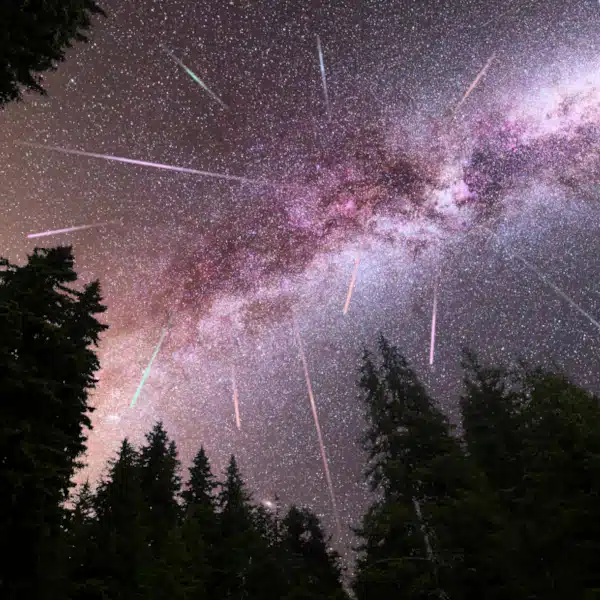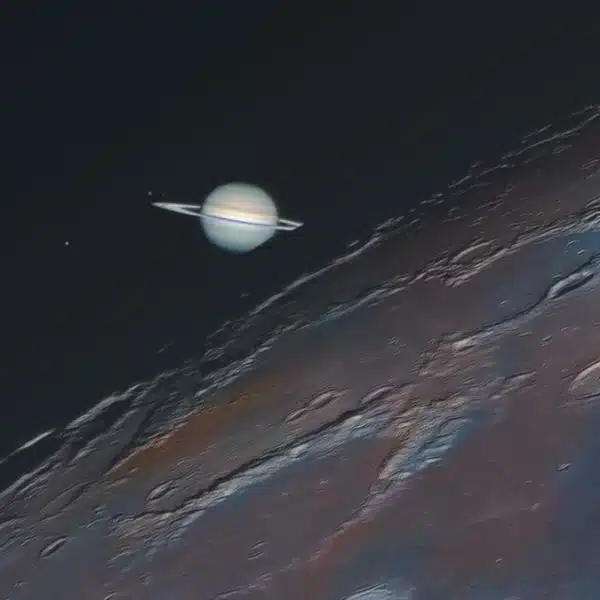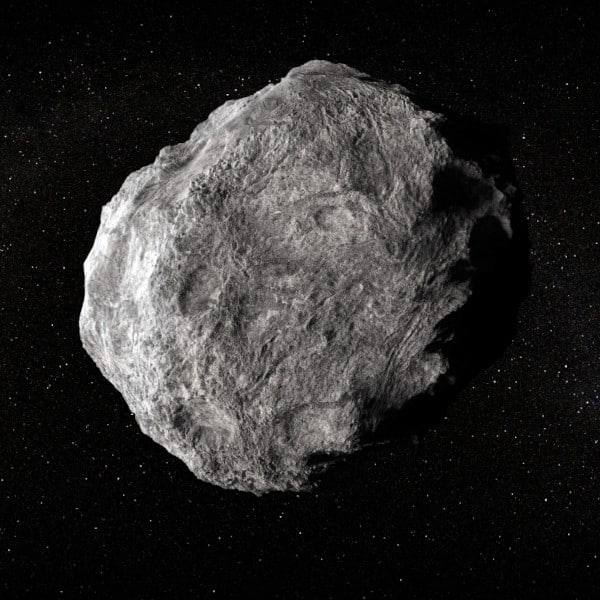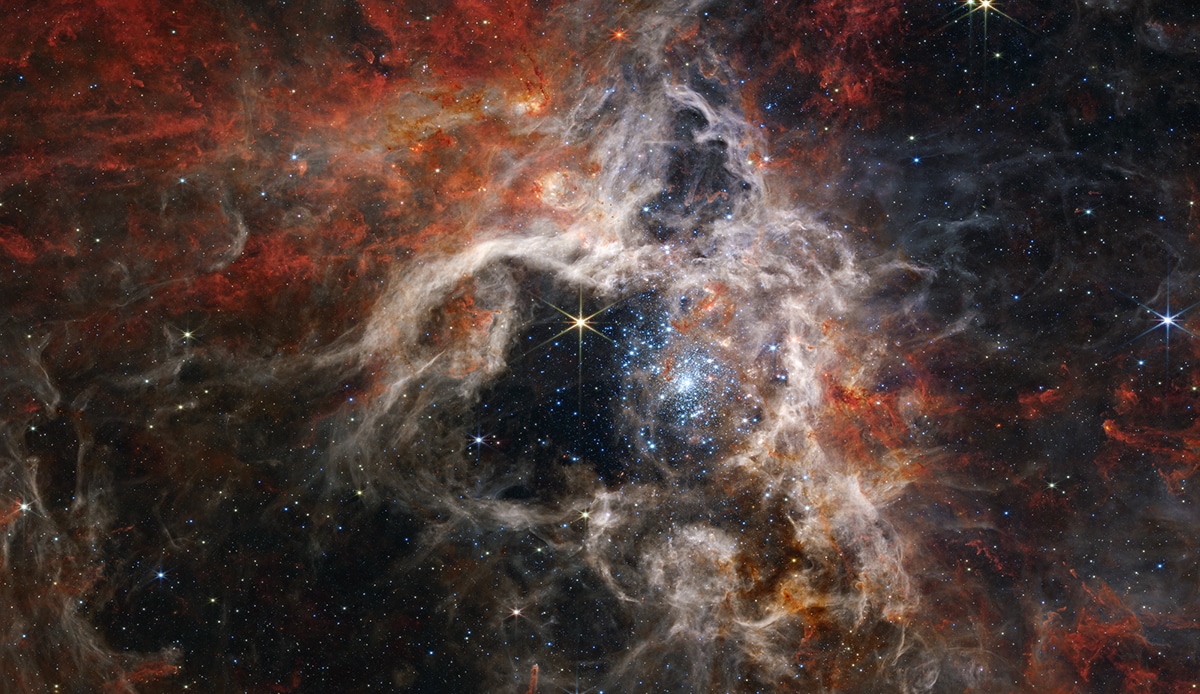
Photo: NASA, ESA, CSA, STScI, Webb ERO Production Team
The James Webb Space Telescope continues to reveal aspects of the seemingly infinite space that surrounds us in astonishing detail. The latest image from NASA's telescope that is leaving stargazers amazed is a stunning mosaic image of the Tarantula Nebula. The telescope brings us a stellar vision, shot with Webb's Near-Infared Camera (NIRCam) that is 340 light-years across, and reveals thousands of young stars that were not possible to see before with earlier telescopes.
The dreamy image shows an expansive region of star-forming space, and was captured as a mosaic of multiple photos before these were combined into a massive 122.5 megapixel image. An older star at the top of the nebula's cavity, most prominent in the image, shows eight diffraction spikes. These are “an artifact of the telescope's structure,” the team explains. The bright blue stars at the centre of the picture highlight the most active region of star formation, and smaller red stars are detectable amongst them. “NIRCam is able to detect these dust-enshrouded stars thanks to its unprecedented resolution at near-infrared wavelengths,” the Webb team says about the still-embedded stars. These stars are yet to emerge from the “dusty cocoon” of the nebula.
Away from the core region where the new stars are formed, the cooler gas is revealed by the rust color in the photo, revealing that the environment is rich in complex hydrocarbons. Future stars are formed by the dense gas. “As winds from the massive stars sweep away gas and dust, some of it will pile up and, with gravity’s help, form new stars,” the team explains.
A different view is captured by the telescope's Mid-Infrared Instrument (MIRI), where the focus is on the area surrounding the central star cluster. Using this light, the stars fade and the glowing gas comes forward. The blue and purple areas shown are the hydrocarbons that light up the surfaces of the dust clouds. “Much of the nebula takes on a more ghostly, diffuse appearance because mid-infrared light is able to show more of what is happening deeper inside the clouds. Still-embedded protostars pop into view within their dusty cocoons, including a bright group at the very top edge of the image, left of center,” the Webb team says of this version. The dark areas, dense pockets of dust in the nebula, are the places where new stars will potentially be born.
NASA's James Webb Telescope has captured the Tarantula Nebula as a mosaic of multiple photos that are combined into a stunning 122.5 megapixel image.
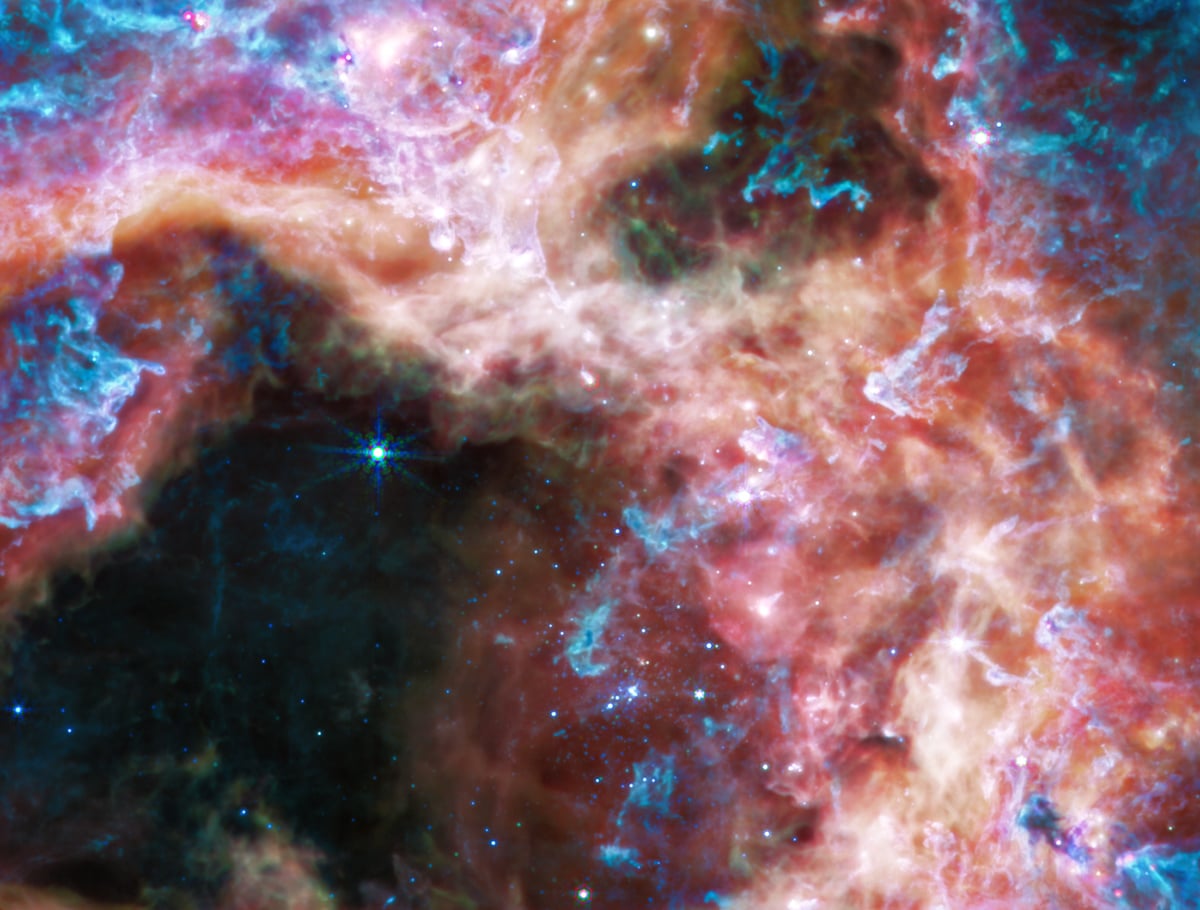
View captured by the telescope's Mid-Infrared Instrument (MIRI) (Photo: NASA, ESA, CSA, STScI, Webb ERO Production Team)
The image shows an expansive region of space where new stars are born.
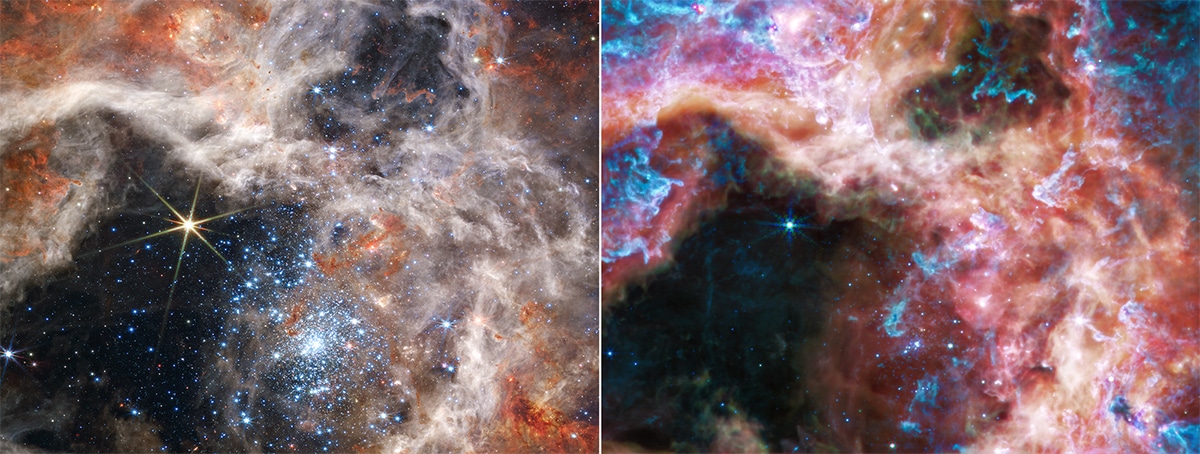
Photo: NASA, ESA, CSA, STScI, Webb ERO Production Team











































































